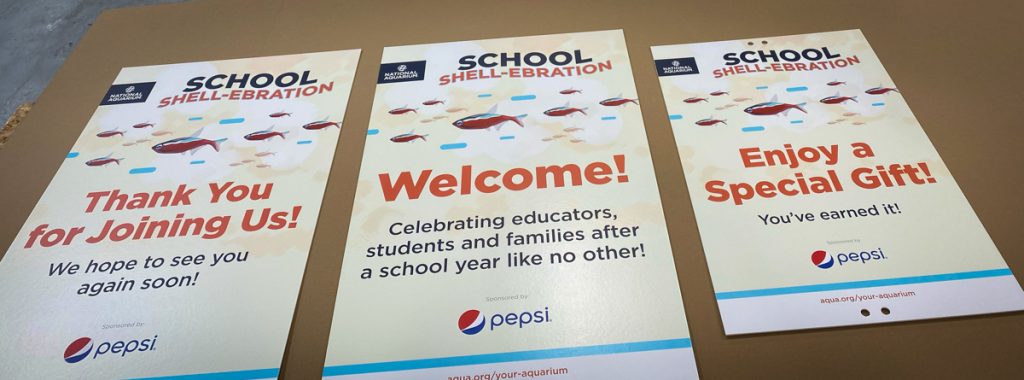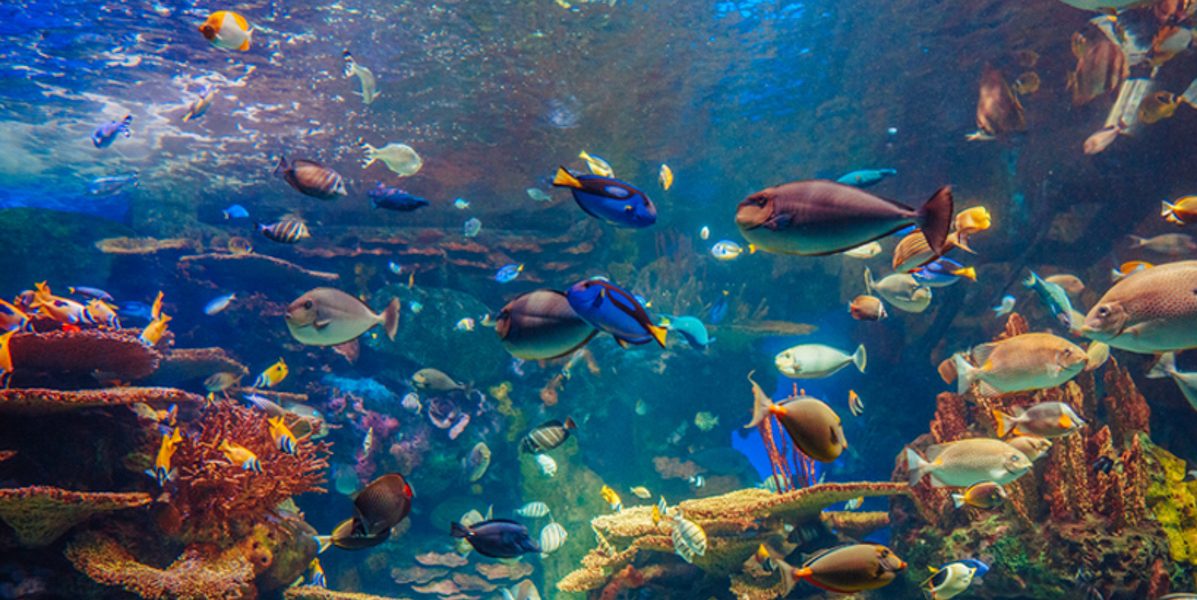According to the Ocean Conservancy, nearly 8 million metric tons of new plastic enter the world’s oceans every year—and that’s on top of the 150 million metric tons of plastic already circulating. We all need to do our part, as individuals and as businesses, to limit our use of plastic. So we were delighted when the National Aquarium in Baltimore, MD came to us for their sustainable event signage.
Most companies use foam core for their disposable and event signage because it is inexpensive and readily available. But foam core is made from polystyrene, a plastic found in a wide range of consumer products. This material can have a significant negative impact on the environment. Aside from being unstable (polystyrene is known for releasing toxic chemicals when heated at certain temperatures), it’s also highly flammable, not recyclable, and will remain in a landfill for the next 500 years.
The National Aquarium decided to make a change. When asked to host a group of Baltimore County pre-K students (its first small-group event following the COVID-19 shutdowns), the aquarium reached out to us to produce sustainable signage for the event. We recommended EcoDisplay Board, which is made from an earth-friendly combination of wood pulp, starch, and water and is 100% recyclable. Within days, we printed and delivered the full-color panels.

Not only does the EcoDisplay Board allow for the highest quality printing, it is thinner but sturdier than foam core, so no more dings, dents, and bends (a must if it’s to hold up to rambunctious preschoolers!). That makes this green option perfect for retail graphics, displays, and temporary signage. Unlike most disposable signage that eventually ends up in landfill, however, the National Aquarium’s new eco-friendly signage can be recycled like any other wood-based product.

This is just one of many sustainable alternatives EcoPrint offers to traditional foam core. Ask us for environmentally friendly material recommendations for your next project!
Sustainably,
Bobby Firestein

